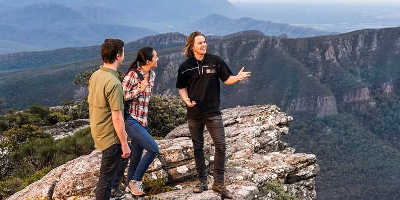
Where do the 12 Apostles stop?
Written by: Cameron Ward
Published: 10/05/2022
Reading time: 4 mins
The world famous 12 Apostles – of which there are actually only 7 – are located off the southwest coast of Victoria, along the iconic Great Ocean Road. Visited by millions every year, the rock formations are an impressive sight to see as they tower out of the water.
The stretch in which the limestone stacks sit is found closest to the town of Port Campbell. That’s not to say this is all you should see when you travel to this part of the state. The Apostles themselves are a highlight of the Great Ocean Road, but you can turn this day into quite the adventure. There is plenty to stop and see along the way.
Where does the Great Ocean Road start and finish?
As we’ve mentioned, the 12 Apostles themselves are found offshore from the Port Campbell National Park. About a 10-minute drive from the town of Port Campbell. You can reach Port Campbell and the 12 Apostles by car from Melbourne. It is quite a drive, taking 4.5 hours. The good news is that the Great Ocean Road is an incredibly scenic drive, so you’ll enjoy your time on the road.
Technically the Great Ocean Road begins in Torquay and ends inland at Allansford. The stretch of road is 243km long.
If you want to extend your trip to be more than a day, you have beautiful coastal towns to stop in at along the way. You could stay for a night, or simply explore the charm of their friendly and laidback locals before continuing to Port Campbell. Torquay, Anglesea, Lorne and Apollo Bay are fantastic towns along the way.
Viewing the 12 Apostles
The best time to see the 12 Apostles is early morning or late afternoon. You’ll avoid the heavy crowds and have a bit more peace and quiet as you look out onto them. Sunset is spectacular.
You can view all 7 of them from viewing platforms – clearly marked from the road on how to walk there and get your snaps. If you make your way further to the Gibson Steps you will be able to see 2 other large rock formations.
When you’re ready to head back home, you can take a quicker – but less scenic route – back to Melbourne. Go via the Princes Highway and shave about an hour off your trip.
Are there actually 12 Apostles?
Nope, and there never was! The Apostles have an interesting history, in that no one has ever known of there being 12 to begin with. Or why they were called the 12 Apostles for that matter. Historically we have only known of 9. One collapsed in 2005, and another in 2009, leaving the 7 standing today.
Originally being called Sow and the Piglets by Englishman George Bass, it is believed the name was changed for marketing purposes. This was due to them ‘standing proud and tall along the shore.’ A look at history estimates they’ve been referred to as the 12 Apostles since the late 1800’s.
From arches to stacks
What is most impressive about the Apostles is that they all began as limestone cliffs. Years of rough waters in the Southern Ocean and erosion led to the limestone breaking down. This turned the cliffs into arches and bridges. Eventually the arches and bridges collapsed, forming the solo columns we see today. Some stand as tall as 60 meters above sea level.
This erosion has led to several fascinating formations – not just the 12 Apostles themselves. You’ll be able to check out Elephant Rock, London Bridge, Thunder Cave, and Gog and Magog. The last two can be seen best from the beach at the bottom of the Gibson Steps walking trail. Gog and Magog are not counted in the 12 Apostles but are seriously impressive.
This is the furthest you will need to go to see the 12 Apostles. By this point you would have taken in some spectacular scenes, and hopefully taken some photos to remember your day at this famous location!











